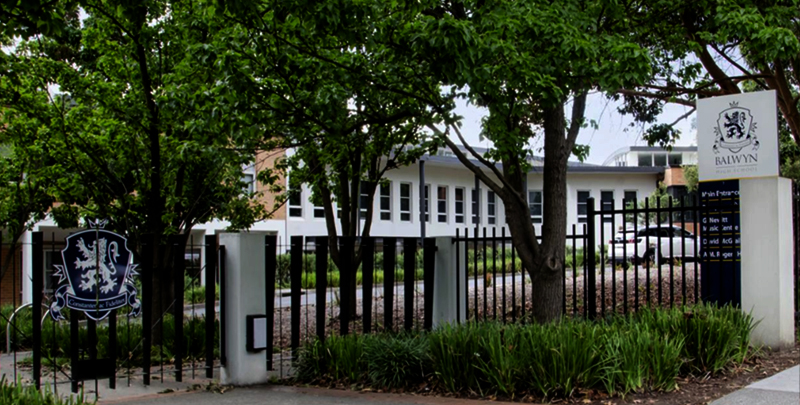Whilst the broader property market has softened over the last 12 months, Domain’s School Zone report shows houses within public school catchment areas have vastly outperformed their respective suburbs, with values rising 10 times faster in some cases.
At face value that obviously makes a compelling case for investing in school zones, but as always in property, the dynamics need to be understood and applied at a more micro level.
It’s important to understand and clearly define the motivation and purpose behind a prospective property purchase. Firstly, is it a home or investment property?
As a home
For an owner-occupier family, the benefits of purchasing a home within a premium school catchment are clear – enabling, potentially, multiple children to receive a fantastic education at a reasonable cost.
Having said that, the premium typically required to buy a home in a high performing school zone means a larger initial purchase price, before the eventual school fee savings come.
However, over the longer term, the significant savings achieved, when compared to having to send children to a high-fee paying private school, can be directed to alternative wealth creating opportunities. This could include renovations, investment properties, retirement funds, or helping children into the property market later down the track.
Another benefit, but often of lesser focus, is the lifestyle attributes that come with buying near a child’s school – ease of commute, as well as close proximity to extra curricular activities and social networks.
As an investment
From an investment perspective, there are a number of pros and cons when it comes to buying a property in a premium school zone.
From a positive perspective, there’s likely to be strong tenant demand, because those that can’t afford to purchase within the zone will be looking for another avenue to gain entry to the school.
Given that most of these school zones are in established suburbs, there’s unlikely to be any increase in supply. That makes for strong capital growth and rental prospects over the longer term.
From a negative perspective, a school’s strong reputation is developed over decades, which means that property values in the area have typically appreciated accordingly. Thus, investors can expect to pay a premium for homes in a high performing school zone.
Also, beware, it’s risky to buy a property that has a one dimensional value driver – in this case a school’s strong reputation. Investors should always look to buy properties with multifaceted demand.
For example, inner suburban terrace houses typically have strong multifaceted demand. They appeal to an array of buyer profiles, including first homebuyers, apartment upgraders, downsizers and investors.
Conversely, if the capital growth of an investment property is solely derived from a top performing school zone, then any changes to the dynamic can impact values.
School zone borders can shift. That means homes bought within the periphery can sometimes find themselves pushed out, and its residents no longer eligible to attend the desired school. In some cases, this can result in a 15% to 20% drop in value for the impacted properties.
In another scenario, a nearby school in a different zone may outperform a well regarded school in a more established zone. Property prices in the latter may thus be negatively impacted.
Or perhaps there’s a change in school leadership. High performing state schools are typically developed and nurtured by passionate principals and school leaders. What happens to the school’s performance when they eventually leave? A school scandal can also damage a long held reputation, and likewise go on to impact surrounding property values.
Having only one demand driver creates other issues too. Families looking to rent or buy in the area will require a larger home, along with other important attributes. Families typically require a higher quality fit-out, a minimum of three bedrooms, and perhaps even a larger block with a backyard.
That makes the entry point significantly higher than other investment potentials closer to the city, where smaller dwellings remain an attractive proposition for buyers and renters across a range of demographics.
Is it smart to have such a large amount of capital tied up in a single asset, or is it better to diversify a portfolio across smaller holdings?
Additionally, having a higher value house means that the land to improvement ratio of the total house value is unlikely to be ideal, potentially sitting at around a 50/50 split. And while tenants will definitely pay for the improvements, they are not a major capital growth driver.
Townhouses may be a more accessible investment option from a price point perspective, as they can still provide the level of accommodation required by a family. That makes for a strong rental return, but given the smaller block, the land to improvement ratio also leads itself to more limited capital growth potential.
It’s important to differentiate between middle ring suburban areas, which sit inside sought after school zones, and those of inner-suburban areas, which also feature highly reputable state schools. In the second instance the school zoning is not the only driver behind values, as inner-suburban areas tend to have a broad range of lifestyle and infrastructure components that create multi-faceted demand. As such the premium paid to be located within a sort after school zone is not as significant in such locations.
Take home message
At the end of the day it comes back to the purpose behind the prospective purchase, and whether a property achieves those goals.
If you’re looking for a home that ensures your children receive a fantastic state school education, then buying in a requisite school zone makes sense.
If you are an investor, then it’s a little more complicated. While great schools can contribute to a location’s superior property values, the location should ideally have more than a single attribute to drive high capital growth.

